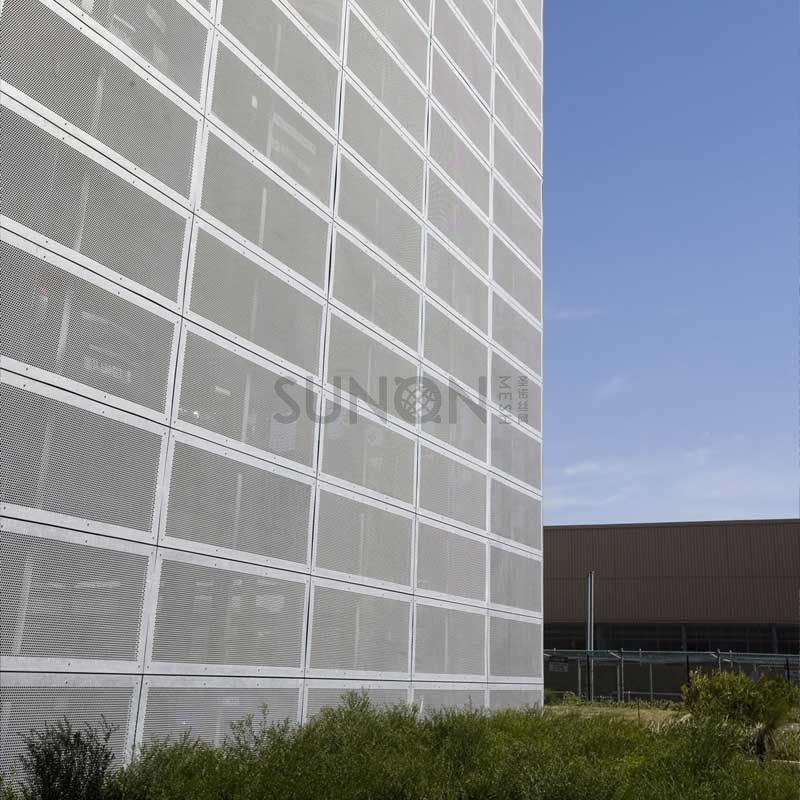The classification of metal mesh materials from processing mainly includes:
1. Braided wire mesh-woven from metal wire, wire and stranded wire by machine.
2. Stretched sheet metal-made from sheet metal through mechanical slitting, stretching and pressing.
3. Welding wire mesh-Welded by metal wire through special methods.
The specific forms of expanded metal mesh materials vary widely, and can be selected according to the processing and design intent of different processing manufacturers. The metal raw materials used in the metal mesh material include steel, stainless steel, copper, aluminum, galvanized sheet and other metal plates, as well as metal wire. After processing, it can also be subjected to coloring such as spraying.
Application of metal mesh in construction
The mesh material was originally widely used in the manufacture of machinery and equipment in the pharmaceutical, environmental protection, petrochemical, grain, feed, mining and other industries.
The talented French architect Dominique Perrault was the first to creatively introduce this mesh metal material into the field of architectural finishes. He designed and built the French National Library from 1989 to 1995 and 1992 to 1999. The German Olympic Bicycle Gymnasium and Swimming Hall created a precedent for the application of large-scale wire mesh.
Since then, many architects have also tried to use this material for building exterior wall finishes, such as the German SONY Center designed by Hemmert Young from 1993 to 2000.

China's Shanghai Jiading F1 circuit building also uses a lot of crimped wire mesh for mining. This special material texture brings a distinctive image to the building, forming a hazy perspective and metallic reflection gloss effect different from glass. The metal mesh curtain wall of the Shanghai FI Speedway under sunlight is transparent, far-sighted and far-sighted.
In addition to pure decorative effects, metal mesh materials can be used in buildings as diffuse reflection facilities, shading facilities, safety protection materials, anti-bird and mosquito materials, and transparent air-permeable materials. Through the design method of overall coating, this material can often hide many elements of the building (such as the relationship between the virtual and the solid formed by the window hole) without affecting the internal functions of the building, thereby forming a more pure effect.
Perforated Metal Mesh
Tensile expanded mesh covering the building entrance
Depending on the type of raw materials, weaving (stretching, welding), and wire density, the effect of different mesh metals varies greatly. You can choose the appropriate specific form according to the design intention.
Architectural and decorative metal facade are generally aluminum alloy, stainless steel, and copper meshes with good weather resistance. In the field of interior design, metal mesh materials are more selective and widely used, and can be used as maintenance partitions, stair railings, decorative materials, furniture materials, etc.
In some forms, especially metal meshes with a small air permeability, the use effect is sometimes similar to that of perforated metal plates, of course, the structural details are different. Most common perforated plates have better stiffness than woven wire mesh, but they are not much different from welded mesh and stretched mesh (of course, it has a lot to do with the thickness of the perforated plate and the perforation rate).
Copyright:@2020-2021
Comments Please sign in or sign up to post.
0
0 of 500 characters used